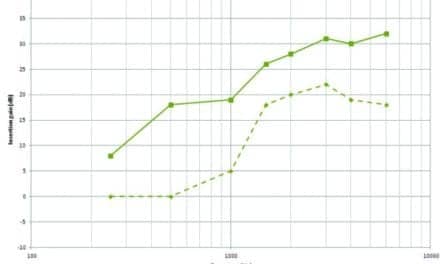Final Word | September 2016 Hearing Review
My friend Tom recently bought a plug-in hybrid car from his son Mike. The car was nearly new, but Mike and his wife recently acquired a second Bernese Mountain Dog, apparently without matching the combined exterior specifications of two big dogs with the interior specifications of the small Ford Fusion. Mike and his wife bought a bigger car, and Tom bought the Fusion.
Tom isn’t a stranger to hybrid cars; he had been driving a hybrid Camry for several years. However, the new plug-in took him into new technology territory with extras like exotic power system monitors, and plenty of safety features. The Fusion isn’t a Tesla (with the controversial assisted driving option), but it does have a collision avoidance feature that warns you of an impending obstruction in your path. Tom figured that he would learn all about the features in due time. What he was most excited about was the green HOV (high-occupancy vehicle) sticker. California has a system for rewarding buyers of economical cars with stickers that allow drivers access to the less-populated HOV lane on freeways; one can drive in the carpool lane alone. California has issued a limited number of stickers, and the green ones are now gone. Tom had grabbed the brass ring with the acquisition of the green-sticker-clad Fusion, and could conquer the freeway commute in the privileged lane. Life was good!
Recently, Tom was heading south on the Route 55 freeway toward Newport Beach, enjoying the freedom of the easy traffic flow in the HOV lane. As he approached his off ramp, he turned on his turn signal, checked his mirrors, looked over his shoulder, and proceeded to move from the HOV lane, planning a sequence of lane changes over the next mile or so to his exit. Suddenly, he heard shrieking warning buzzers, and turned to see his dashboard lit up with flashing warning lights that he struggled to interpret, suspecting some complex electrical power system failure. The next thing he heard was the deafening report of the airbags deploying, followed by an abrupt halt of forward motion. Tom’s attention had been so captured by the collision avoidance warning lights that he failed to see the cars stopping in front of him. Fortunately, other than an increase in his tinnitus, neither he nor the person he collided with suffered serious injuries.
I tell this story to illustrate how bright shiny objects and an unexpected sequence of events can capture (or hijack) our attention and distract us from more important things. New features and capabilities in hearing aids are coming at us at a very rapid pace. Wireless capabilities, algorithms, bands and channels (or is it channels and bands?), advanced directional microphone systems, noise reduction, brain connections, bandwidth, frequency lowering, proprietary noise management, and feedback reduction are all given incomprehensible but impressive names and themes on brochures and websites. It is hard for us to keep up with all this, so it must be very confusing for consumers seeking information about hearing aids.
With so much information available these days, the role of the hearing care provider has become that of a guide leading patients with varying levels of understanding through a distracting jungle of shiny objects to information about available treatments—placing them on the path we think is right for them. In a dispensing environment when a patient is in the chair in front of us, about 70% of the time they will make a decision to proceed with hearing aids within a few months if the treatment option is offered to them.1 The decision is a big one for patients, and we must be sure to lead them down the proper path, pointing out which of the shiny objects might be best for them. The right path might be simple enough. Once we listen to the problems the patient has encountered and integrate that information with their test results and their priorities, we may have a good idea about their best path, tailoring for factors like audibility in quiet, understanding speech in noise, listening to music, tinnitus, cosmetic concerns, ease of use, cost, cosmetics, and comfort in noise.
The Final Word? Problems may occur when we or the patient focus solely on a particularly attractive, shiny object, and lose sight of the path. We tend to be driven by technology because it is what we know, and because we have seen what it can do. We may forget that technology, while important, is no substitute for clinical expertise and common sense. We need a proper blend of expertise, patient participation, and technology to help us avoid distractions, stay on the best path, and not set off the air bags.
Reference
-
Personal Communicaton: Cindy Byer, AuD, Vice President, Professional Services, HearUSA, August 2015
Dennis Van Vliet, AuD, has been a prominent clinician, columnist, educator, and leader in the hearing healthcare field for over 40 years, and his professional experience includes working as an educational audiologist, a private-practice owner, and VP of audiology for a large dispensing network. He currently serves as the senior director of professional relations for Starkey Hearing Technologies, Eden Prairie, Minn.
Correspondence can be addressed to HR or: [email protected]
Original citation for this article: Van Vliet D. The Final Word: Avoiding Distractions on the Path to Hearing Care. Hearing Review. 2016;22(9):50.






